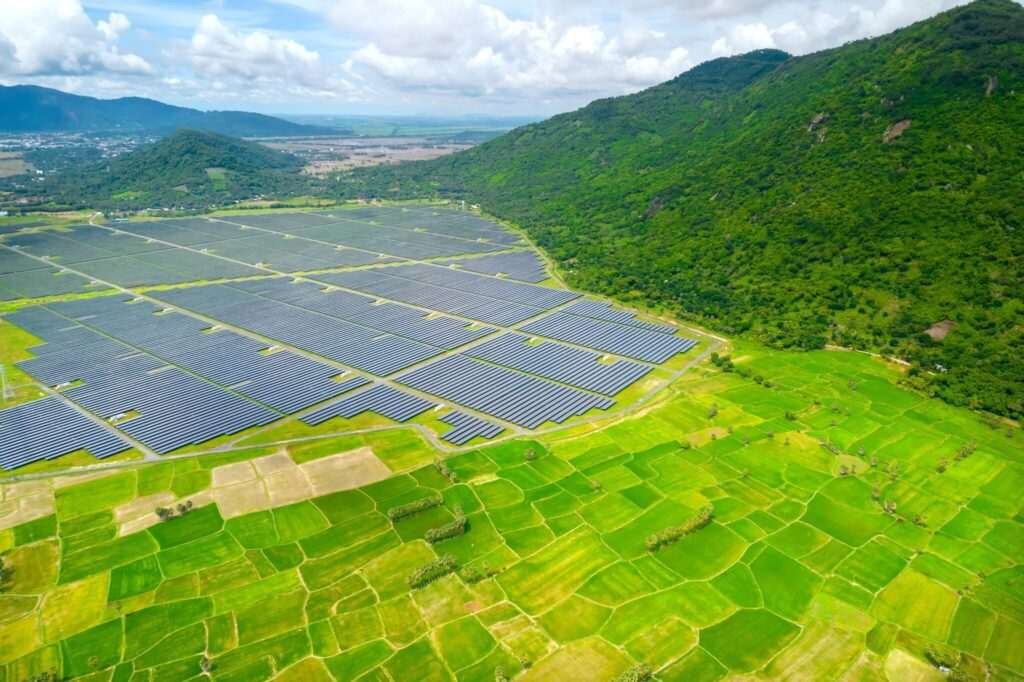Introduction
China’s increasing investments in Vietnam’s clean energy sector reflect a strategic approach to consolidating its influence in Southeast Asia. With Vietnam’s electricity demands skyrocketing, the nation’s transition to renewable energy aligns perfectly with China’s global ambitions in sustainable development and regional hegemony.
Background: Regional Dynamics and the Energy Crisis
Vietnam’s rapid industrial growth and rising living standards have led to soaring energy demands. The nation’s 8th National Power Development Plan (PDP8) underscores its commitment to renewable energy, targeting 30.9-39.2% by 2030 and up to 71.5% by 2050. Yet, achieving these goals requires substantial foreign investment and technological support, areas where China has stepped in as both partner and patron.
China, while not officially linking Vietnam to its Belt and Road Initiative, has leveraged renewable energy as a bridge to deepen economic ties. Between 2013 and 2022, China allocated $45 billion to climate-focused initiatives, a portion of which has directly impacted Vietnam. Notably, in 2024, the nations signed agreements solidifying collaboration in green development.
Major Chinese Players in Vietnam’s Renewable Energy Market
Sungrow Renewables
Since 2017, Sungrow has invested nearly 600 MW in Vietnam’s wind and solar projects. In October 2024, the company announced a $1 billion expansion plan to develop renewable projects totaling 1 GW. This aligns seamlessly with Vietnam’s net-zero emissions ambitions for 2050.
China Tianying
A diversified energy player, China Tianying has proposed collaborations with Vietnam in waste-to-energy initiatives and green hydrogen production, further cementing China’s role in Vietnam’s energy infrastructure.
Opportunities and Challenges in the Partnership
Economic Benefits
Vietnam stands to gain from China’s financial clout and advanced renewable energy technologies. These investments bridge crucial gaps in Vietnam’s infrastructure, enabling the nation to meet its ambitious PDP8 targets while boosting local employment and technological expertise.
Strategic Risks
However, the partnership is not without its pitfalls. China’s dominance in Vietnam’s energy infrastructure could lead to over-reliance, giving Beijing leverage in political and economic negotiations. Such dynamics could compromise Vietnam’s autonomy in strategic decision-making.
Geopolitical Implications
China’s role in Vietnam’s energy landscape resonates beyond economics—it shapes the balance of power in Southeast Asia. By embedding itself in Vietnam’s renewable energy future, China positions itself as an indispensable ally, yet also a potential gatekeeper in the region’s energy security.
Conclusion: A Calculated Strategy Under the Guise of Green Development
China’s investments in Vietnam’s clean energy sector serve as a dual-purpose strategy: promoting sustainable development while securing geopolitical and economic influence. For Vietnam, the influx of capital and technology is essential for its renewable energy ambitions, but the long-term implications of this dependence require careful navigation.
The interplay of cooperation and control in these energy partnerships exemplifies the intricate balance of power in modern geopolitics, where the pursuit of sustainability masks the relentless march of influence.







